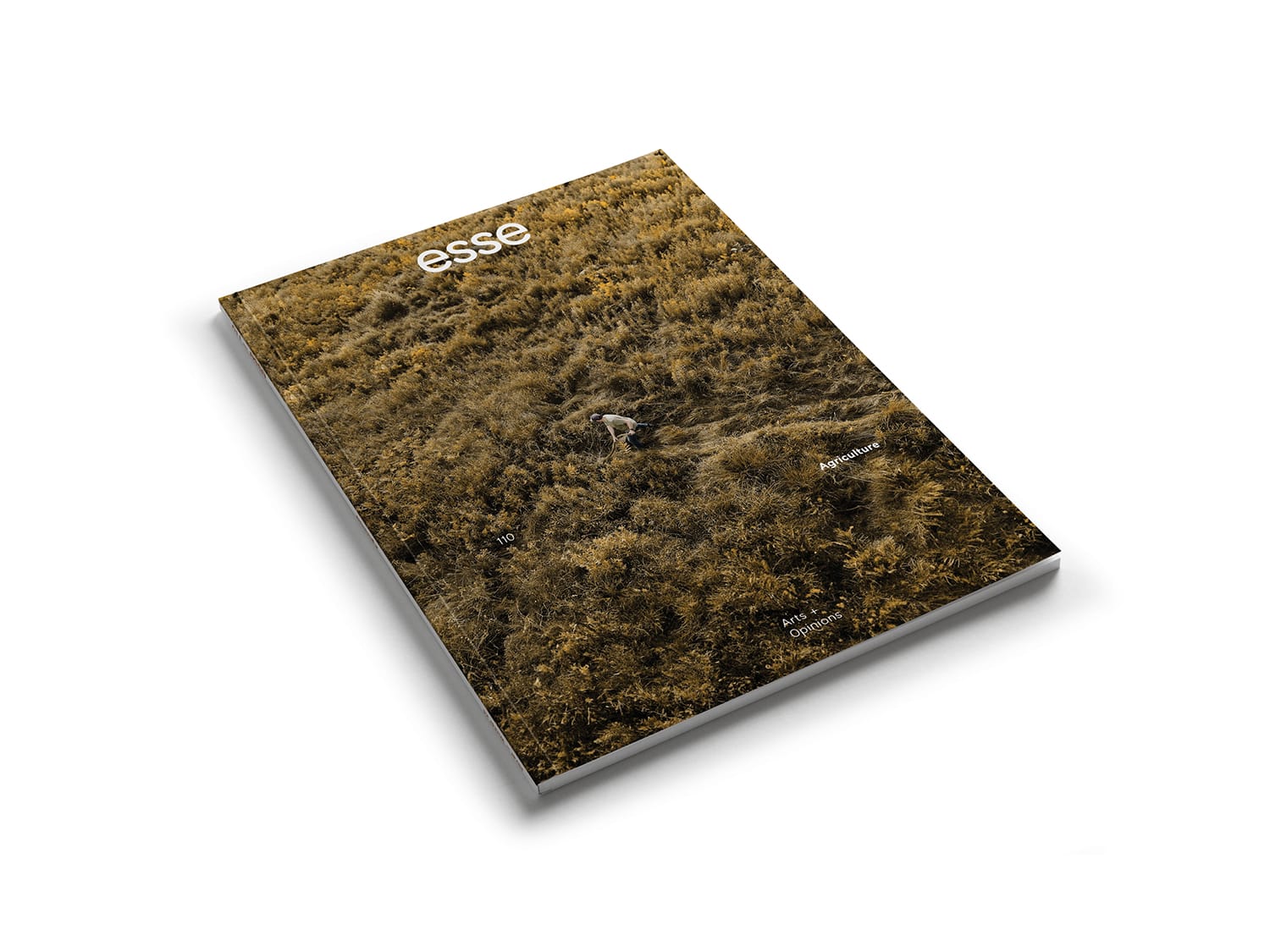Take to the Field(s)
As they bear witness to global ecological concerns, artists today are becoming more and more engaged. The turn to the plant world accompanying this evolution, which has led to a profusion of nature-oriented works, may bring to mind different art-historical movements, from nineteenth-century naturalism to the environmental art of the 1960s and 1970s. Currently, however, there is an overwhelming trend toward collaborating closely with those who labour on the land — farmers — to highlight their common concerns.
So, it’s not surprising that Esse is “taking to the field(s)” with the artists. The play on words isn’t haphazard here: it speaks of the magazine’s propensity to branch off into paths parallel to those of art and aesthetics in an attempt to stimulate societal debates—specifically, in this issue’s thematic section, about agroecological questions. Although the blurring of disciplinary boundaries in the visual arts isn’t new, it will always be essential to rethink why it occurs. We have therefore decided to highlight agricultural imaginaries and relationships between human beings and the land in order to reassess how we approach agriculture, its connections with different colonial histories, and its transformation toward fairer and more sustainable practices.
Making an association between art and agriculture, however, doesn’t mean confining art to purely utilitarian purposes or depriving it of its metaphorical force. Rather, it makes room for generating new ideas that, we hope, will contribute to a transition toward eco-responsible models. But it’s important here to avoid reproducing a romantic vision of a “return to the land” in order to take concrete action. The reflections presented in this issue are aimed at bridging the gap between society and agricultural production by bringing things back to a more human scale and enhancing the value of agricultural cultural heritage, including women’s agricultural knowledge and traditional Indigenous knowledges. They also probe the memory preserved in seeds and soils and the subversive power of plants, which are often considered apolitical. We wander through gardens and cultivated land in many regions — in Québec and Canada, Colombia, Norway, France, Senegal and Mali, Vietnam, and Palestine. We have deliberately chosen to open the issue with an article about collective actions developed on occupied Palestinian land. We cannot be indifferent to the current situation in Gaza, where people are being killed by the thousands. Alongside the artists, we are asking leaders to call upon all parties to institute an immediate ceasefire to put an end to this humanitarian catastrophe.
Most of the works analyzed in this issue are openly activist and demand new ways to address agriculture while denouncing the devastating effects of settler colonialism and territorial appropriation, as well as those of the productivist model of industrial farming and agrocapitalism. Among the artists’ projects are the formation of vegetable farms and urban community gardens; the reconstruction of an ancient Indigenous agricultural system; the acquisition of parcels of land to remove them from the real estate development market and offer alter-economic housing; the artistic re-evaluation of rural or urban peripheries; the creation of flower gardens facilitating the reintroduction of indigenous pollinator species; and the distribution of food products to help small communities.
All of these projects — so many and so varied — indisputably illustrate the artists’ and communities’ desire to work together for biodiversity and for environmental and food justice. Implicit in these outspoken positions are a true love of the land and a manifestation of the pleasure in maintaining, caring for, and cultivating it, or even letting it return to the wild.
This issue is an invitation to step off the beaten path of industrial agriculture and take to the field(s) — to take the land back into our own hands.
Translated from the French by Käthe Roth
